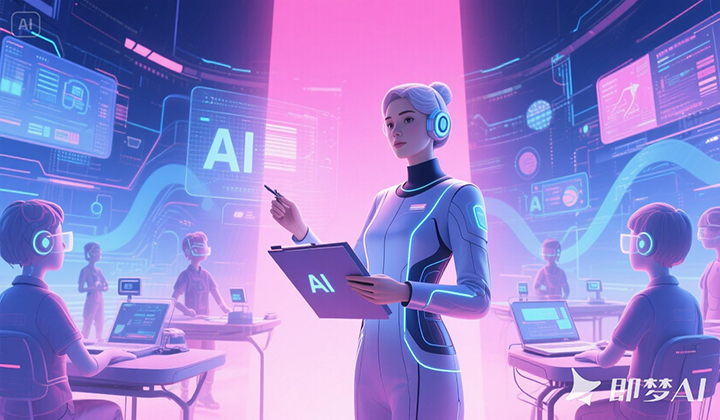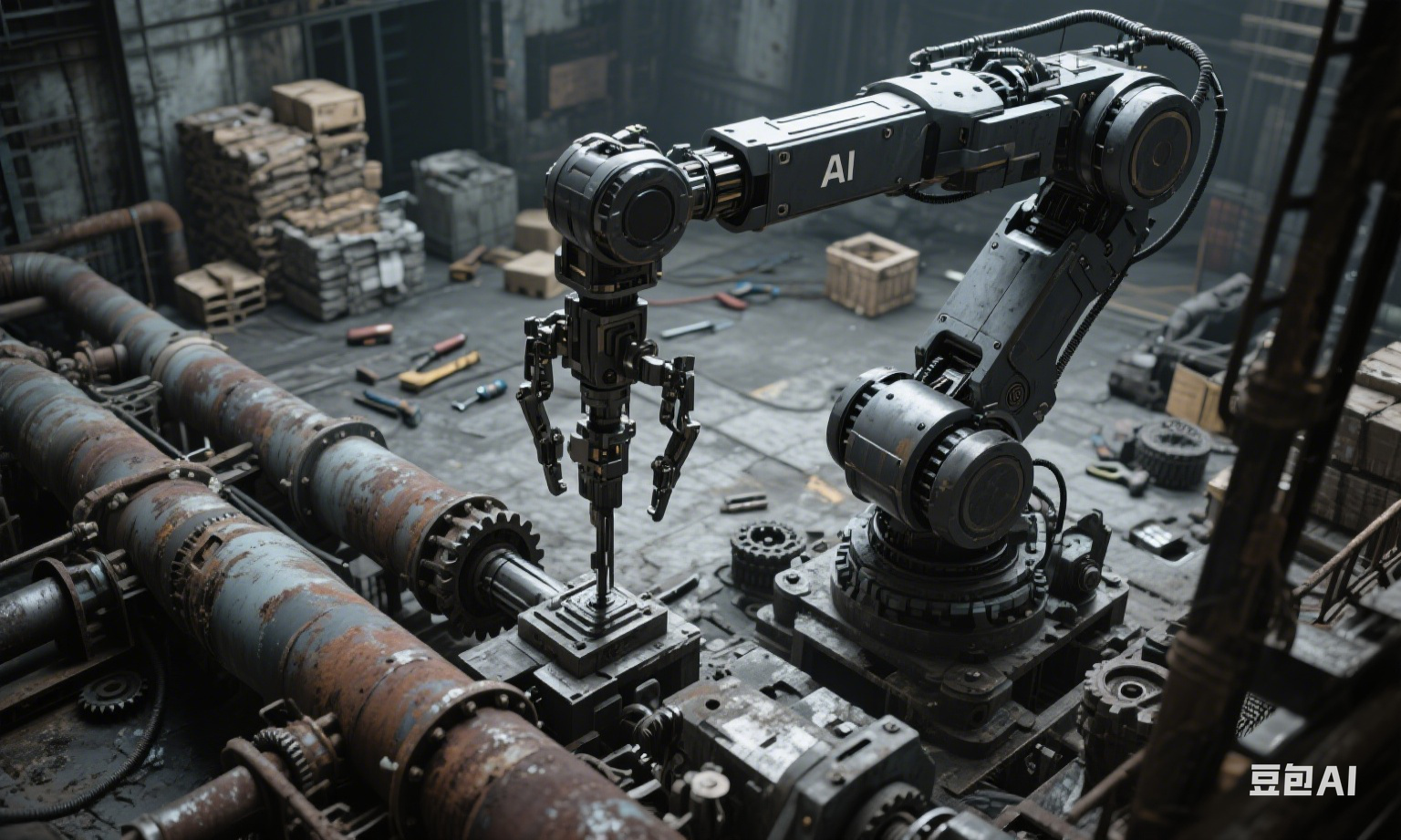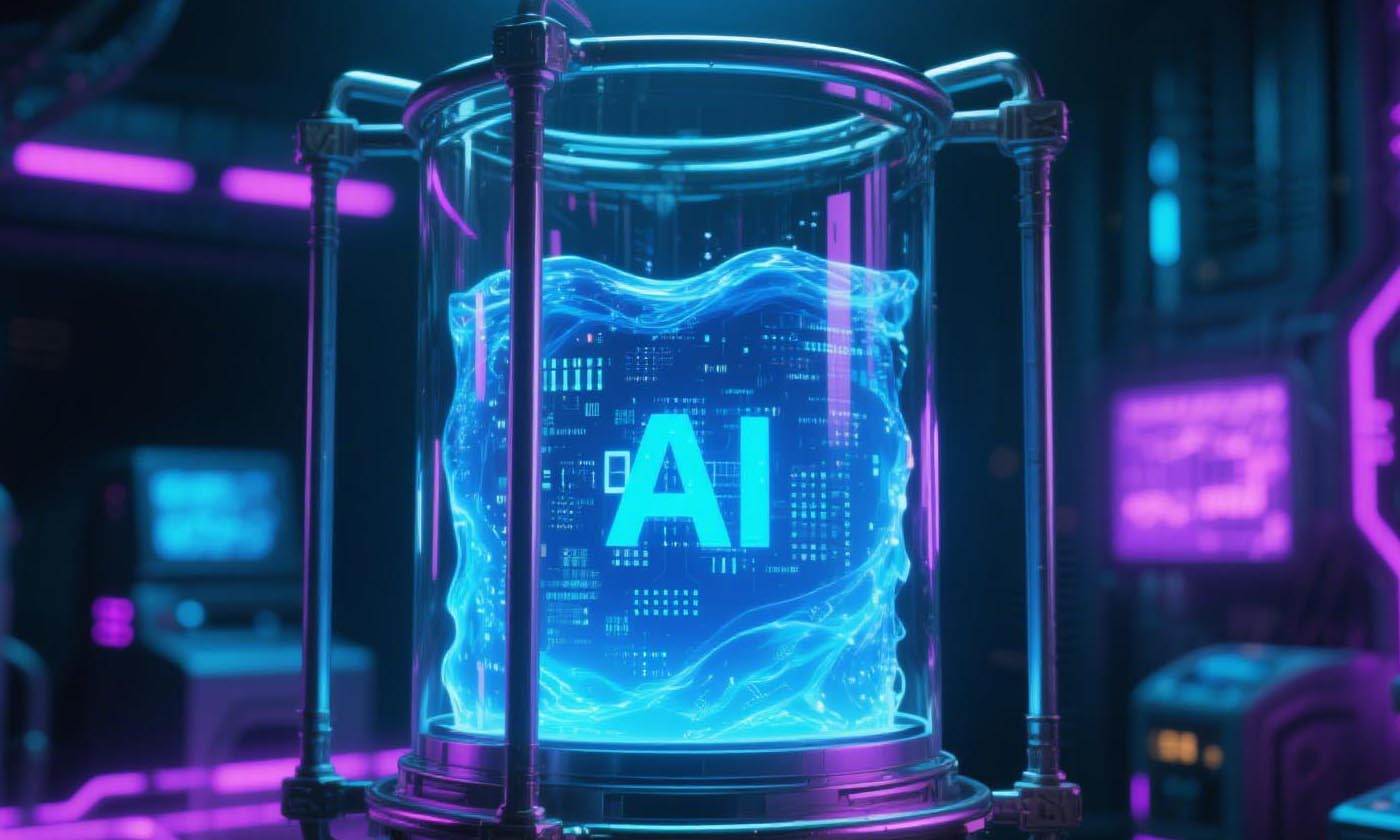AI in Animation: Transforming the Creative Landscape
观棋 2025-05-27
In the dynamic realm of animation, a profound transformation is underway, propelled by the rapid evolution of artificial intelligence (AI). This technological revolution is redefining the creative landscape, offering animators innovative tools and opening up new frontiers of possibility. From streamlining production processes to enhancing creative expression, AI is playing an increasingly pivotal role in the animation industry.
AI in Animation: Transforming the Creative Landscape
In the dynamic realm of animation, a profound transformation is underway, propelled by the rapid evolution of artificial intelligence (AI). This technological revolution is redefining the creative landscape, offering animators innovative tools and opening up new frontiers of possibility. From streamlining production processes to enhancing creative expression, AI is playing an increasingly pivotal role in the animation industry.
Revolutionizing Character Design and Modeling
Character design, a cornerstone of animation, has traditionally been a labor-intensive process. However, AI is now revolutionizing this aspect by providing animators with powerful assistance. Tools like Artbreeder and Runway ML leverage machine learning algorithms to generate character designs based on textual descriptions. Animators can input specific traits, such as hair color, facial features, and body type, and the AI system will generate a range of design options. This not only saves significant time in the initial concept phase but also sparks creativity by presenting novel and unexpected design ideas.
In the realm of 3D modeling, AI is automating complex tasks. Systems can analyze 2D character designs and automatically generate the underlying 3D models, complete with a basic rigging structure. This automation reduces the manual effort required for tasks like creating the digital skeleton that enables character movement. For example, an animator might start with a 2D sketch of a new character. Using AI-powered software, they can quickly transform this sketch into a 3D model, which can then be refined and customized to their exact specifications.
Enhancing Animation Rigging and Motion Capture
Rigging, the process of creating a digital skeleton for characters, has long been a time-consuming and intricate task. AI is now simplifying this process by automating much of the rigging workflow. AI-driven tools can analyze a character's design and generate a rigging structure that is optimized for natural movement. This not only speeds up the rigging process but also ensures that the resulting rig is more likely to produce realistic animations.
Motion capture, another crucial aspect of animation, has also been enhanced by AI. Traditional motion capture techniques often require expensive equipment and complex setups. AI-powered motion capture software, such as DeepMotion, can turn 2D videos into 3D animations. By analyzing the movement patterns in the 2D video, the software can generate realistic 3D animations with minimal manual intervention. This technology is particularly useful for independent animators and small studios that may not have the resources to invest in high-end motion capture equipment.
Accelerating Animation Rendering
Rendering, the process of generating the final images or frames of an animation, can be a time-consuming and computationally intensive task. AI is making significant inroads in this area, with the development of AI-powered rendering engines. Tools like NVIDIA's DLSS (Deep Learning Super Sampling) and Autodesk Arnold use deep learning algorithms to predict how scenes will appear, reducing the need for time-consuming calculations. This results in faster rendering times without sacrificing image quality.
For example, in a large-scale animation project with complex scenes and numerous characters, using an AI-powered rendering engine can significantly reduce the rendering time. This not only speeds up the overall production process but also allows animators to iterate more quickly on their work, making it easier to experiment with different visual styles and effects.
Transforming Lip Syncing and Voice-to-Animation
AI has also transformed the lip syncing process in animation. Software such as Altered Studio and Papercup uses AI to automatically synchronize lip movements with voice recordings. This eliminates the need for animators to manually adjust frames to match the dialogue, saving a significant amount of time and effort. Moreover, AI is enabling a more advanced form of voice-to-animation technology. By analyzing the tone, inflection, and emotion in voice recordings, AI models can apply these elements to characters, making animated conversations feel more natural and dynamic.
Empowering Background and Environmental Design
Creating detailed backgrounds and environments for animated films has always been a time-consuming task. AI tools are now offering animators new ways to streamline this process. For example, NVIDIA GauGAN allows animators to sketch basic shapes and then uses AI to fill in the details, creating realistic landscapes or urban environments in minutes. This not only saves time but also provides artists with a wider range of creative options. They can quickly explore different environmental concepts and styles, and make changes on the fly, without having to start from scratch.
The Benefits of AI in Animation
The integration of AI into the animation workflow offers numerous benefits. Firstly, it significantly improves efficiency. Tasks that once took days or even weeks can now be completed in a fraction of the time. This allows animators to focus more on the creative aspects of their work, such as storytelling, character development, and visual style. Secondly, AI reduces production costs. By automating repetitive tasks and accelerating the production process, studios can save on labor costs and reduce the overall time and resources required to produce an animation.
Moreover, AI enhances creativity. It provides animators with access to a vast range of creative possibilities, from generating unique character designs to creating immersive environments. AI can also help animators experiment with different animation styles and techniques, opening up new creative avenues that may not have been possible before. Finally, AI improves the quality of animations. By enabling more realistic character movements, better lip syncing, and higher-quality rendering, AI helps to create animations that are more engaging and visually appealing.
Ethical Considerations in AI Animation
As with any emerging technology, the use of AI in animation raises a number of ethical considerations. One of the primary concerns is intellectual property and ownership. When an AI tool is used to create a character, animation, or other creative asset, questions arise about who owns the rights to that work. There are also concerns about the potential for AI to be used to create content that is derivative or infringing on existing intellectual property.
Another ethical consideration is the impact of AI on employment in the animation industry. As AI automates more tasks, there is a risk that some jobs may be displaced. However, it is important to note that AI also creates new opportunities. For example, animators may need to develop new skills to work with AI tools, and there will be a growing demand for professionals who can manage and oversee AI-assisted production processes.
The Future of AI in Animation
The future of AI in animation is bright, with even more exciting developments on the horizon. As AI technology continues to advance, we can expect to see even more sophisticated tools and techniques that will further enhance the animation process. For example, AI may be used to create more intelligent and responsive characters that can adapt to different situations and user inputs. We may also see the development of AI-powered storytelling tools that can help animators generate engaging storylines and plot twists.
In conclusion, AI is transforming the animation industry in profound ways. By revolutionizing character design, rigging, rendering, and other aspects of the animation process, AI is making it easier and more efficient to create high-quality animations. While there are ethical considerations that need to be addressed, the potential benefits of AI in animation are immense. As the technology continues to evolve, we can look forward to a new era of creativity and innovation in the world of animation.
In the dynamic realm of animation, a profound transformation is underway, propelled by the rapid evolution of artificial intelligence (AI). This technological revolution is redefining the creative landscape, offering animators innovative tools and opening up new frontiers of possibility. From streamlining production processes to enhancing creative expression, AI is playing an increasingly pivotal role in the animation industry.
Revolutionizing Character Design and Modeling
Character design, a cornerstone of animation, has traditionally been a labor-intensive process. However, AI is now revolutionizing this aspect by providing animators with powerful assistance. Tools like Artbreeder and Runway ML leverage machine learning algorithms to generate character designs based on textual descriptions. Animators can input specific traits, such as hair color, facial features, and body type, and the AI system will generate a range of design options. This not only saves significant time in the initial concept phase but also sparks creativity by presenting novel and unexpected design ideas.
In the realm of 3D modeling, AI is automating complex tasks. Systems can analyze 2D character designs and automatically generate the underlying 3D models, complete with a basic rigging structure. This automation reduces the manual effort required for tasks like creating the digital skeleton that enables character movement. For example, an animator might start with a 2D sketch of a new character. Using AI-powered software, they can quickly transform this sketch into a 3D model, which can then be refined and customized to their exact specifications.
Enhancing Animation Rigging and Motion Capture
Rigging, the process of creating a digital skeleton for characters, has long been a time-consuming and intricate task. AI is now simplifying this process by automating much of the rigging workflow. AI-driven tools can analyze a character's design and generate a rigging structure that is optimized for natural movement. This not only speeds up the rigging process but also ensures that the resulting rig is more likely to produce realistic animations.
Motion capture, another crucial aspect of animation, has also been enhanced by AI. Traditional motion capture techniques often require expensive equipment and complex setups. AI-powered motion capture software, such as DeepMotion, can turn 2D videos into 3D animations. By analyzing the movement patterns in the 2D video, the software can generate realistic 3D animations with minimal manual intervention. This technology is particularly useful for independent animators and small studios that may not have the resources to invest in high-end motion capture equipment.
Accelerating Animation Rendering
Rendering, the process of generating the final images or frames of an animation, can be a time-consuming and computationally intensive task. AI is making significant inroads in this area, with the development of AI-powered rendering engines. Tools like NVIDIA's DLSS (Deep Learning Super Sampling) and Autodesk Arnold use deep learning algorithms to predict how scenes will appear, reducing the need for time-consuming calculations. This results in faster rendering times without sacrificing image quality.
For example, in a large-scale animation project with complex scenes and numerous characters, using an AI-powered rendering engine can significantly reduce the rendering time. This not only speeds up the overall production process but also allows animators to iterate more quickly on their work, making it easier to experiment with different visual styles and effects.
Transforming Lip Syncing and Voice-to-Animation
AI has also transformed the lip syncing process in animation. Software such as Altered Studio and Papercup uses AI to automatically synchronize lip movements with voice recordings. This eliminates the need for animators to manually adjust frames to match the dialogue, saving a significant amount of time and effort. Moreover, AI is enabling a more advanced form of voice-to-animation technology. By analyzing the tone, inflection, and emotion in voice recordings, AI models can apply these elements to characters, making animated conversations feel more natural and dynamic.
Empowering Background and Environmental Design
Creating detailed backgrounds and environments for animated films has always been a time-consuming task. AI tools are now offering animators new ways to streamline this process. For example, NVIDIA GauGAN allows animators to sketch basic shapes and then uses AI to fill in the details, creating realistic landscapes or urban environments in minutes. This not only saves time but also provides artists with a wider range of creative options. They can quickly explore different environmental concepts and styles, and make changes on the fly, without having to start from scratch.
The Benefits of AI in Animation
The integration of AI into the animation workflow offers numerous benefits. Firstly, it significantly improves efficiency. Tasks that once took days or even weeks can now be completed in a fraction of the time. This allows animators to focus more on the creative aspects of their work, such as storytelling, character development, and visual style. Secondly, AI reduces production costs. By automating repetitive tasks and accelerating the production process, studios can save on labor costs and reduce the overall time and resources required to produce an animation.
Moreover, AI enhances creativity. It provides animators with access to a vast range of creative possibilities, from generating unique character designs to creating immersive environments. AI can also help animators experiment with different animation styles and techniques, opening up new creative avenues that may not have been possible before. Finally, AI improves the quality of animations. By enabling more realistic character movements, better lip syncing, and higher-quality rendering, AI helps to create animations that are more engaging and visually appealing.
Ethical Considerations in AI Animation
As with any emerging technology, the use of AI in animation raises a number of ethical considerations. One of the primary concerns is intellectual property and ownership. When an AI tool is used to create a character, animation, or other creative asset, questions arise about who owns the rights to that work. There are also concerns about the potential for AI to be used to create content that is derivative or infringing on existing intellectual property.
Another ethical consideration is the impact of AI on employment in the animation industry. As AI automates more tasks, there is a risk that some jobs may be displaced. However, it is important to note that AI also creates new opportunities. For example, animators may need to develop new skills to work with AI tools, and there will be a growing demand for professionals who can manage and oversee AI-assisted production processes.
The Future of AI in Animation
The future of AI in animation is bright, with even more exciting developments on the horizon. As AI technology continues to advance, we can expect to see even more sophisticated tools and techniques that will further enhance the animation process. For example, AI may be used to create more intelligent and responsive characters that can adapt to different situations and user inputs. We may also see the development of AI-powered storytelling tools that can help animators generate engaging storylines and plot twists.
In conclusion, AI is transforming the animation industry in profound ways. By revolutionizing character design, rigging, rendering, and other aspects of the animation process, AI is making it easier and more efficient to create high-quality animations. While there are ethical considerations that need to be addressed, the potential benefits of AI in animation are immense. As the technology continues to evolve, we can look forward to a new era of creativity and innovation in the world of animation.












